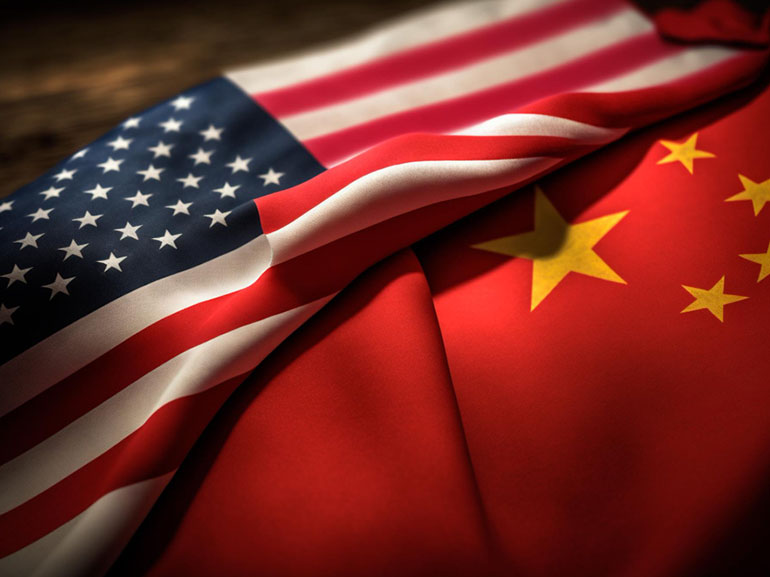US Shutdown Averted: Nvidia Stock Falls as China PBoC Maintains Loose Policy
Financial markets responded to three major developments on Tuesday, 11 November 2025, as the US government moved to end its longest shutdown on record, Japanese conglomerate SoftBank exited its entire position in chipmaker Nvidia, and China's central bank reaffirmed its commitment to accommodative monetary policy. The convergence of fiscal resolution, equity sector rotation and diverging central bank policies is shaping investor sentiment across global markets.

TL;DR
US Senate passes funding bill 60–40, extending government operations through 30 January 2026 and ending the 41-day shutdown
SoftBank sells entire Nvidia stake for US$5.83bn to fund AI investments, triggering 3%+ decline in semiconductor stocks
China's PBoC maintains "appropriately loose" monetary policy for the fifth consecutive month, whilst ensuring ample liquidity
Markets show mixed sentiment as fiscal clarity improves, but tech valuations face fresh scrutiny ahead of earnings season.
Key developments
US Government Shutdown Ends: Senate Passes 60-40 Funding Bill Through January 2026
The US Senate voted 60–40 on Monday evening to approve a continuing resolution that extends federal funding through 30 January 2026, marking a potential end to the longest government shutdown in American history. The 41-day impasse had disrupted economic data releases and delayed public services, creating uncertainty around the Federal Reserve's policy outlook.
The legislation now moves to the House of Representatives for a final vote. Analysts note the resolution reduces immediate fiscal risk, though the delayed release of key employment and inflation reports has complicated monetary policy assessments for both policymakers and market participants.
US equity indices posted modest gains following the Senate vote, with investors relieved that the political standoff had reached a near-term resolution. The shutdown had already cost an estimated US$3bn in delayed government spending and postponed economic indicators that typically guide central bank decisions. (Source: Reuters)
SoftBank's US$5.83 Billion Nvidia Exit Pressures Tech Sector
SoftBank Group disclosed on Monday that it had sold its entire stake in Nvidia Corporation for US$5.83bn, redirecting capital toward artificial intelligence investments, including its substantial position in OpenAI. The sale, completed in October, coincided with a sharp pullback in Nvidia share price, which declined more than 3% in Tuesday's trading.
The Japanese technology conglomerate's exit raised fresh questions about valuations in the semiconductor sector, where stocks have surged over the past 18 months on AI-driven demand. Traders monitoring the stock noted increased volatility as the disclosure sparked reassessments of positioning ahead of quarterly earnings (scheduled for next week on Wednesday, 19 November).
SoftBank's quarterly profit more than doubled to US$16.2bn, driven by gains on its AI portfolio, yet the firm's decision to exit Nvidia at current price levels suggests portfolio rebalancing rather than fundamental concerns about the chipmaker's prospects. The Nasdaq Composite underperformed broader US indices on Tuesday, weighed down by weakness in technology stocks. (Source: The Guardian)
China Central Bank Reaffirms Accommodative Monetary Stance
The People's Bank of China (PBoC) released its quarterly monetary policy report on Tuesday, reiterating plans to maintain an "appropriately loose" policy stance whilst ensuring ample liquidity in the banking system. The statement marks the fifth consecutive month that Chinese authorities have held benchmark interest rates unchanged, balancing growth support against financial stability concerns.
The PBoC's accommodative posture contrasts with more cautious stances from other major central banks, particularly as inflation pressures remain subdued in China. The central bank pledged to reduce commercial bank liability costs and improve policy transmission mechanisms to support credit growth amidst ongoing domestic economic headwinds.
Goldman Sachs economists now expect the PBoC to delay anticipated rate cuts until the first quarter of 2026, pushing back earlier forecasts for monetary easing in late 2025. The central bank's approach reflects sensitivity to currency markets and capital flow concerns whilst attempting to stabilise growth expectations. (Source: Reuters)
Market Implications: What This Means for Traders
The combination of resolved US fiscal uncertainty, semiconductor sector rotation and diverging central bank policies presents a complex backdrop for markets entering the final weeks of 2025. Whilst the end of the government shutdown removes one source of near-term risk, traders remain focused on upcoming earnings reports and economic data that will shape year-end positioning.
The SoftBank-Nvidia transaction highlights portfolio rotation within technology sectors, as capital flows toward AI infrastructure companies, whilst profit-taking emerges in established semiconductor positions. US equity index traders are monitoring whether the Nasdaq's underperformance represents a short-term technical correction or signals broader concerns about tech sector valuations.
China's continued monetary accommodation, coupled with the Federal Reserve's more restrictive stance, may impact currency markets and commodity prices as the year draws to a close. The divergence in policy approaches across major economies creates both opportunities and risks for internationally exposed portfolios.
Conclusion
Markets found modest support as the most extended U.S. government shutdown neared its end, yet investor sentiment remains cautious amid volatility in the technology sector and uncertain global growth dynamics.
The confluence of fiscal clarity, equity sector repositioning and central bank policy divergence underscores the complex environment facing traders as 2025 draws to a close.
Attention now turns to upcoming economic releases and corporate earnings data that will provide clearer signals for year-end market direction.
*Past performance does not reflect future results. The above are only projections and should not be taken as investment advice.
FAQs
Why did the US government shutdown end?
The Senate passed a bipartisan continuing resolution 60–40 on 11 November 2025, extending federal funding through 30 January 2026. The legislation now requires House approval to formally end the 41-day shutdown, the longest in US history.
How did Nvidia stock react to SoftBank's stake sale?
Nvidia shares declined more than 3% following the disclosure that SoftBank had sold its entire stake worth US$5.83bn. The sale, completed in October, raised concerns about semiconductor sector valuations and prompted reassessment of tech stock positioning.
What is China's current monetary policy stance?
The People's Bank of China maintains an "appropriately loose" monetary policy, keeping benchmark interest rates unchanged for five consecutive months. The central bank aims to ensure ample liquidity whilst supporting credit growth amid domestic economic challenges.
Which markets were most affected by these developments?
US technology indices, particularly the Nasdaq Composite, underperformed broader markets due to Nvidia's weakness. Equity markets gained modestly on the shutdown resolution, whilst currency and bond markets reacted to central bank policy divergences.
When will the US government formally reopen?
The government will reopen once the House of Representatives passes the Senate funding bill. A vote is expected imminently, with operations resuming shortly after the presidential signature.







